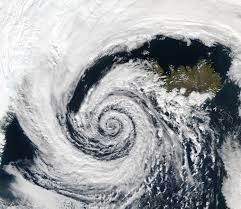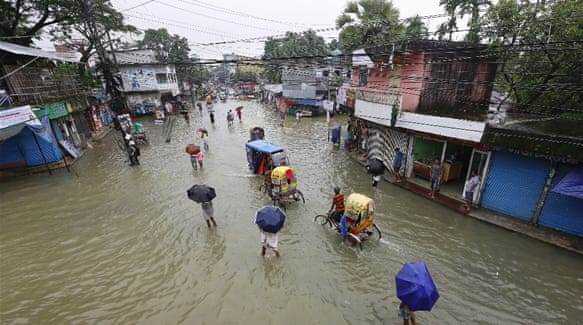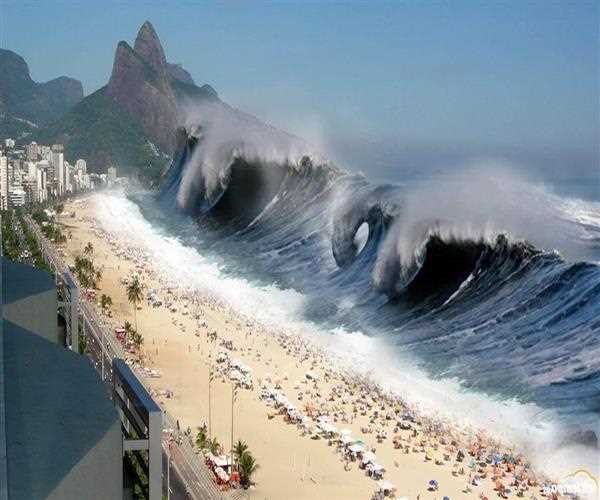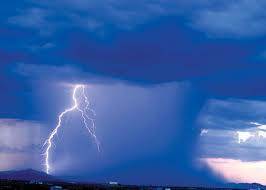When there is a state of imbalance in nature, then calamities arise due to which growth and progress are hampered. Apart from natural disasters, some disasters are also anthropogenic. Natural calamities such as earthquakes, tsunamis, landslides, volcanoes, droughts, floods, melting of icebergs etc. Only through patience, prudence, mutual support and management can one overcome these disasters. Disaster management is done in two ways before and after the disaster.
Mountains, rivers, seas etc. have great importance in the natural structure of India. They sustain the livelihood of innumerable people. But when there is a state of imbalance in nature, then the calamities come, their progress is hindered and hard work and diligent development work are destroyed. According to astrology, when the planets are in a bad state, there are calamities, according to the scriptures, when sins increase, then there are calamities on the earth. Claims, grasshopper attacks, pandemics, storms, hot winds And apart from these natural disasters like cold wave, there are some human-caused calamities like communal riots, terrorism arson, refugee problems, air, rail and road accidents etc. Apart from this, there are many types of calamities that destroy human life. Appropriate disasters in India between 1980 and 2020 include drought 11 times, earthquake 27 times, pandemic 57 times, extreme heat 42 times, flood 194 times, insect infection 2 time, large scale drought 44 times, hurricane 92 times, volcano 4 The bars have arrived. Due to which the life and life was disturbed and there was huge economic and loss of life.
Earthquake - Earthquake is one of the most devastating forms of natural disaster, causing widespread devastation. Earthquake simply means "tremor of land", that is, shaking of land. Earthquakes come as a result of the earth's inner actions. The actions in the inner part of the earth also have an effect on the surface and many actions take place in it. When the movement of the layer becomes so powerful that it breaks the rocks and forces them to move with a fault, then vibrations or shocks occur on the surface of the earth. Tremors are earthquakes, the earthquake has a devastating effect on the earth. Loss of landslide surface is visible in the form of damage or destruction of structures like man-made bridges, buildings, though earthquakes can occur anywhere and anytime on the earth but they Some areas are very sensitive for origin The sensitive area refers to the weak parts of the earth where there is a high incidence of balancing and faulting, as well as the continent and the oceanic zone of volcanism are also the major earthquake-causing sites.

Cyclone - We all know that in it, the air rises from the outside, moving towards the center. It has low air pressure in the center and high pressure around it. Both the horizontal and vertical movement of air is fast, with thunderstorm, storm as well as hail and heavy rain. The weather changes in a short time. In this context, it is important to mention the tropical cyclones Hurricane and Typhoon. In China, they are called Typhoon and in the southern United States and America and Mexico they are called Hurricanes. Its speed is 90-125 km. Seen up to hourly. Due to the rapid movement of air, seals become pillars of seawater and penetrate into coastal areas and cause terrible destruction of destruction.

Landslides - Landslides are also a natural occurrence. Landslides directly affect land use. Often occurs in mountainous parts such as the sloping parts of the Himalayan mountains of India. Sliding down rocks is called landslides. This action can be due to natural and human reasons, in which the road gets blocked. Dam breaks and village cities are destroyed, earthquake is the most influential factor in natural causes for landslides. Along with this, human activities such as road construction, excavation, tunneling, dams, reservoirs are encouraged by landslides along with degradation of forests, water leakage, waste land erosion and excess rainfall. Routes are often blocked due to landslides in mountainous areas like Sikkim, Bhutan and Nepal.

Flood disaster - The submergence of a large city land submerged in which there is a loss of immense wealth is called a flood. The factors responsible for this are extreme environmental destruction, landslides, dams, breach of embankment and barrage, increase of silt in roads and other construction works, filling of sediment in dams built in rivers, etc. According to the report of the Central Flood Commission, between the years 1953 to 1990, on an average, 7944 M.H. per annum. The area continues to be affected by floods. The area most affected by the floods was 17500 MH in the year 1978. The area has also been. In the period between 1953 and 1990, on an average, 12, 18, 690 buildings and 1532 persons have been victims of flood disaster every year. Whereas in the same period maximum 3507542 buildings were destroyed in the year 1978 and maximum 11316 persons were flooded in the year 1977. In our country, not only the flood affected area is increasing but also the flood affected population is increasing. According to a recent estimate by the Food and Agriculture Organization, about 25 crore population of the country is living in those areas where there is a possibility of floods.

Tsunami Disaster - Tsunami consists of two words TSU means port and NAMI means waves. It is also called tidal or seismic waves. Due to the shaking of the sea surface, the water filled above the bottom falls up and down. Causing tsunami waves. The main center of tsunami in India, the northern part is connected to a single sensing seismic belt. The strip runs from the Bhuj region of Gujarat to the foothills of the Himalayas and Sumatra Island via Myanmar.
Cloudburst - Winds rise rapidly in them. There is intense rainfall with lightning and thunder of clouds. Snowfall can also occur. Due to torrential rains, villages in the village get swept away. Apart from this, there are many man-made calamities, these are possible with our understanding, caution, discretion and mutual support. Natural man-made or other types of calamities of some kind come in the country almost all the time. It needs to be managed.
Disaster Management - There are two different and important aspects of disaster management. Pre-disaster and post-disaster management. Pre-disaster management is also known as risk management. Disaster risks arise from a confluence of vulnerability and vulnerability that varies with seasonal variation and time. There are three parts to risk management. Risk identification, risk reduction and transfer of risk An effective strategy for managing the risk of any disaster starts with risk identification. It includes knowledge of nature and to a large extent information about risk. It includes information about the natural environment of a particular place, as well as predetermination of where to come. Thus a reasonable decision can be taken as to where and how much to invest. It may help to design such a project. Which can remain stable in the face of severe effects of disasters. Therefore, the work of professionals in and related to risk management is to forecast the risk areas and try to determine their risk and take precautions accordingly, it is a part of this subdivision of human resources and finance and other disaster management.
Disaster management takes place at many levels
Disaster Management at the Central Level - The High Empowered Committee (HPC) made it difficult to make comprehensive and effective disaster management system and disaster management ministry at the national level, which is the NCCM in floods. Such as can set up appropriate subsidiary bodies including centers and authorities or use existing centers for assistance. The all-party committee set up by the Central Government for disaster management is headed by the Prime Minister. A scientific and technical advisory committee will also assist him to run this scheme.
Disaster management at the state level - States inevitably have the responsibility to deal with national disasters. The central government's role is to support physical and financial resources. Most states have relief commissioners who are in-charge of relief and rehabilitation work in the event of natural disasters in their states and the full in-charge is the chief secretary and the relief commissioners work under its direction and control. The state government invites non-governmental organizations and other national and international organizations to participate in efforts to reach the affected people at the time of disaster.
Disaster management at the district level - District administration is the focal point for the implementation of all government schemes and activities for disaster management. The District Officer has been given adequate powers to carry out relief work in minimum time. It is necessary to prepare a contingency plan in advance to deal with the disasters in each district and the District Magistrate has the right to monitor.
Important Areas in Disaster Management
1. Communication - Communication can be very useful in disaster management. Awareness through media, publicity and during disaster response can be very helpful through housing information system.
2. Remote Sensing - Space technology plays an important role in effectively impacting the disaster. use this-
1.Develop an early warning strategy
2. In formulating and implementing development plans
3. Mobilizing resources including communication and remote medical services
4. Rehabilitation and post-disaster reconstruction can be done.
3.Geographical Information- Geographical information system software is used for geography and use of maps created by computer to coordinate and assess the location based information store. Geographic information systems can be used in scientific investigation, resource management and disaster and development planning.
Person's role in disaster control - What can a person manage in earthquake, flood, storm, storm. Its following role has been suggested in the context of disaster-
Person's role in an earthquake - Do not run outside at such times, bring your family members under the table near the door or under the bed if you are sick in bed, stay away from windows and chimneys. When out of the house, stay away from buildings, high walls or hanging wires, do not re-enter damaged buildings.
Earthquake can also be forecast - TV As far as possible with radio, Internet, earthquake can also be predicted after forecasting natural disasters like excess rain and famine, but the person working on computer will be able to find it only a few seconds beforehand. California Institute of Technology, US Seismologists from the Geological Survey and California Department of Minerals and Territory are constantly trying to predict earthquakes on-line. It will send such data in an emergency. With which email can be sent to computer users. Trinet aims to have 600 powerful motion sensors and 150 large internationals to inform people about earthquakes. If Trinet was able to carry out its proposed work, California would be the first state to observe the earthquake area, thus developing earthquake forecasting capabilities. In a nutshell, Jim David, head of California's Department of Minerals and Geological, says that the sensor will be able to deliver information via computer immediately after an event such as earth tremors.
While in the vehicle - If you feel earthquake while riding in a car or bus, ask the driver to stop the vehicle with one side, stay inside the vehicle.
Be in the houses - Extinguish all types of fires, stoves etc. as soon as possible, turn off the heater, if the house is damaged, turn off electricity, gas and water. If there is a fire in the house and it is not possible to extinguish it immediately, then go out immediately. If gas leakage is detected even after turning off the gas, then immediately go out of the house. Save water Keep all utensils full for emergency. Open the pets.
The role of the person during the flood - listen to the radio for prior information and advice of the flood. If you have received flood warning or are in fear of flood, disconnect all electrical equipment connections and remove all your valuable and household items, clothes etc. from the reach of flood water. To avoid hazardous pollution, take all pesticides away from water. If you have to leave the house, turn off the electricity and gas. Move vehicles, farm animals and transportable goods to a nearby high place, if you have to go out of the house, close the exterior doors and windows of the house. Try not to walk in flood waters by foot or by car. Never roam in flood affected areas of your own free will.
Role of a person in a cyclone or typhoon - listen to TV, radio for prior information and advice, allow enough time for safety. A cyclone can change direction, speed, and intensity within a few hours and become moderate. That is why radio, TV for latest information Keep constant contact with
Preparation - If stormy winds or strong thunderstorms are predicted in your area, store or tightly lock open planks, iron drain, sheets, litter compartments or any other items that prove to be dangerous, large windows. Close with tape so that they do not rattle, the nearest shelter Reach the site or if there is a responsible government agency etc. then evacuate the area. When a storm strikes - stay indoors and take refuge in the strongest part of your house, follow the information provided by TV, radio or other means. If the roof starts blowing, then open the windows of the house, if you are in the open, then do not go outside or on the sea shore when the storm is calm. Usually, along with cyclones, big storm waves arise in the sea or lakes and if you live in coastal areas, then take precautions for flooding.










